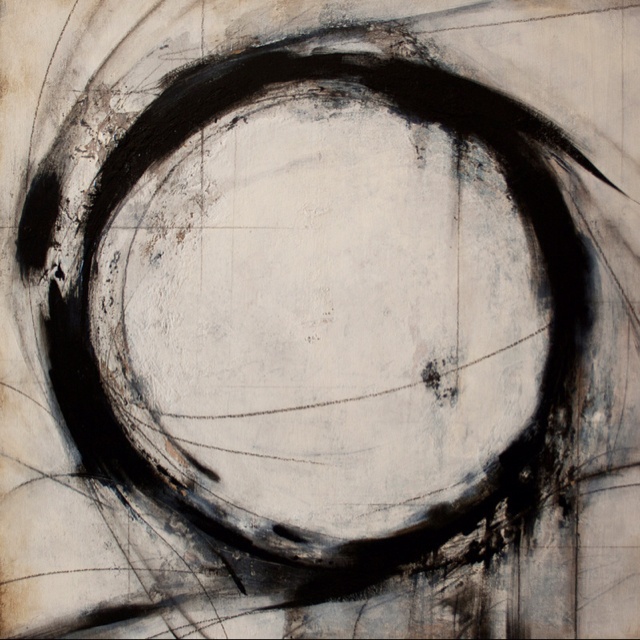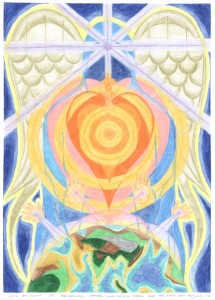Dear Integral Meditors,
What do we mean by ‘spiritual?’ the article below explores the relationship between spirituality as a quest for meaning and spirituality as a discipline that requires going beyond the quest for meaning. You’ll see what i mean when you read it!
In the spirit of the journey,
Toby
 Deeper Meaning, Meaningless, Deeply Meaningless
Deeper Meaning, Meaningless, Deeply Meaningless
The spiritual path – the quest for meaning
What does ‘spiritual’ and to ‘be spiritual’ actually mean? One definition is that to be spiritual means to reflect deeply and consciously about the meaning of your life, and to to bring that meaningful purpose into reality through your actions. So for example:
- If you feel strongly connected to parenting, you might feel motivated to create a service or resource through which people can become better parents
- If you are a businessperson, you might feel motivated to redirect your efforts so that the meaning of your activities becomes to benefit others through your business as well as make money
- If you are an artist you may feel spiritually motivated to keep working despite the financial obstacles because making art gives spiritual meaning and direction to your life
- If you are a meditator, your motivation for meditating may mature from simply relaxing to pursing the path of enlightenment
There are of course endless examples…
So here spiritual means living one’s life on purpose and with purpose as opposed to living it unconsciously and without direction in a meaningless way.
The spiritual path then involves a progression from superficial levels of motivation and direction to gradually deeper and more mature expressions of meaning, which works just fine until we get to the second meaning of spiritual, which is the enlightenment experience.
Deeply meaningless – the enlightenment experience
In this context enlightenment means connecting to the formless, timeless, eternal, ever present dimension of consciousness through meditation and learning to rest ones awareness in this ‘already perfect’ state of awareness. Even if you haven’t done a lot of meditation before, if you simply relax your body, mind and heart deeply you will start to feel this open spacious feeling – that is the thing to which I am referring here, just realized on a much deeper level!
From the point of view of the enlightenment experience, everything is perfect already, so there is really no point in holding onto any ‘deeper meaning’ in life; ultimately the meaning of life is present, right in front of you! When you connect to the enlightenment experience your life becomes ‘deeply meaningless’; there is nothing to realize and nowhere to go, you are already home and you always have been. To look anywhere other than the ‘Now’ for purpose is meaningless!
Integrating meaningful with deeply meaningless
So then to be integrated in a spiritual way means to bring together your experience of deeper meaning with the ‘deep meaninglessness’;
- On one level you gradually, reflectively and consistently bring deeper purpose to your life through meaningful and creative action
- On another level you realize you are, ultimately already where you want to be and there is no higher purpose or meaning other than resting in the formless timeless now!
An analogy – The mud city
In the city of Djenne there is the famous ‘mud mosque’; an elaborate and beautiful building build of mud (see picture above). Building spiritual meaning in your life is like building the mosque – you invest time and effort to build something beautiful. The enlightenment experience is like the mud – It does not matter what stage of the building you are at, the mud is always mud.
In a similar way you can work each day to build spiritual meaning in your life whilst recognizing and resting in the ‘mud’ of the formless timeless present moment; We can meaningfully go somewhere without going anywhere!
Related article: What Does “Spiritual” Really Mean? (And What it Does Not Mean!)
Related service: Life-fullness coaching with Toby
© Toby Ouvry 2015, you are welcome to use or share this article, but please cite Toby as the source and include reference to his website www.tobyouvry.com
Upcoming Courses at Integral Meditation Asia:
JULY & AUGUST
Saturday 18th July, 9.30am-12.30pm – Growing Your Mindful Freedom – The Essential Meditation of the Buddha: A Three Hour Meditation Workshop
Saturday 18th July, 2.30-5.30 pm – Mindful Resilience – Sustaining effectiveness, happiness and clarity under pressure through meditation and mindfulness – A Three Hour Workshop
Wenesday July 22nd 7.30-9pm – Integral Meditation Session @ Basic Essence – Meditating with your inner strength of heart & mind
Wednesday July 29th 7.30-9pm – Integral Meditation Session @ Basic Essence – Meditation for connecting to a positive attitude
Saturday 1st August, 9.30am-12.30pm – Finding Simplicity in the Complexity: An Introduction to Meditation From the Perspective of Zen
Saturday 1st August, 2.30-5.30pm – Meditations for Developing the Language of Your Shadow Self – A Three Hour Workshop
Friday 14th August, 7.30-9pm – Integral Meditation Session @ the Reiki Centre
Integral Meditation Asia






 Is Spirit a Place of Light or Dark?
Is Spirit a Place of Light or Dark? 
 Four Types of Mindful Coaching Conversation
Four Types of Mindful Coaching Conversation
 In my previous article on the
In my previous article on the